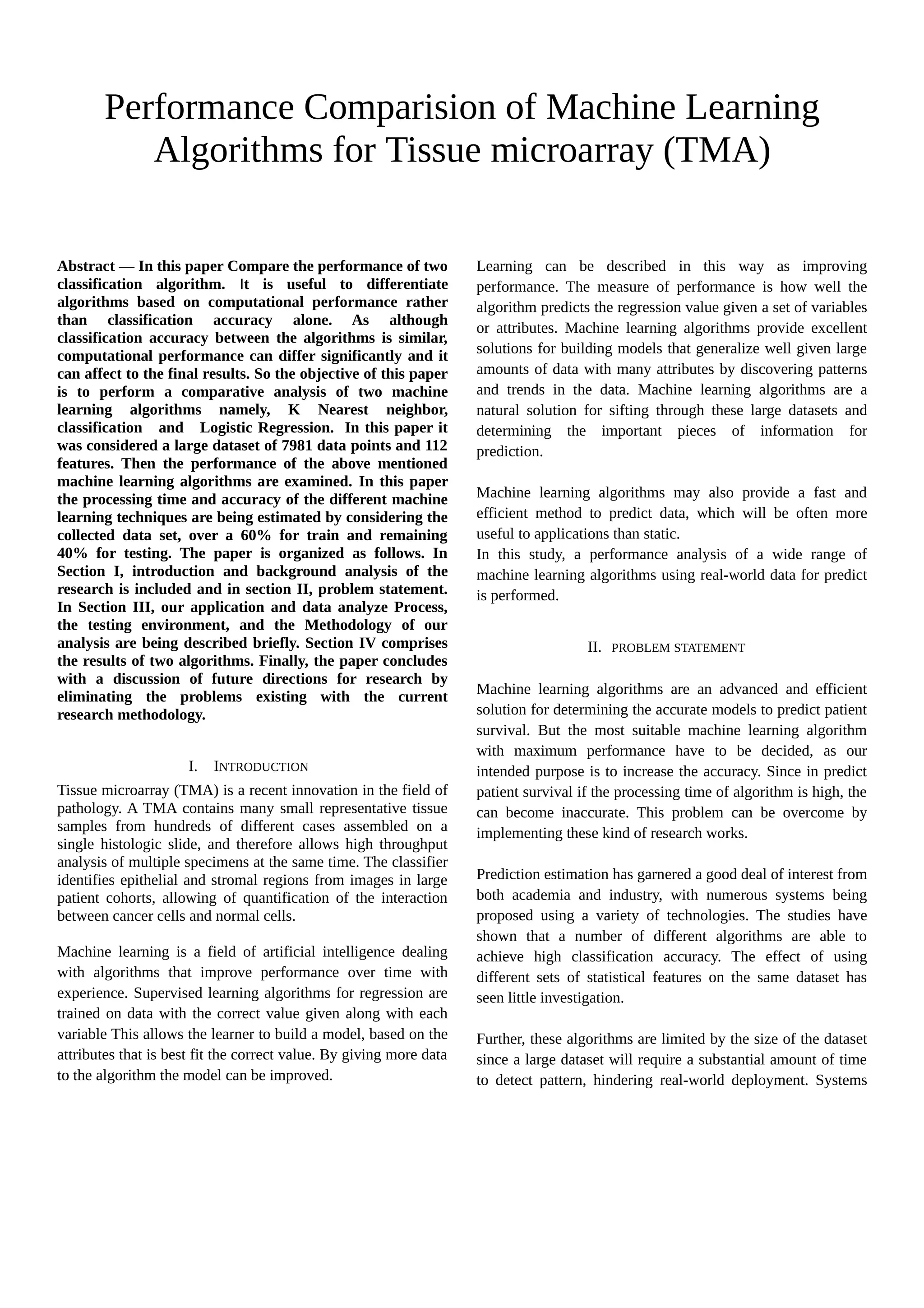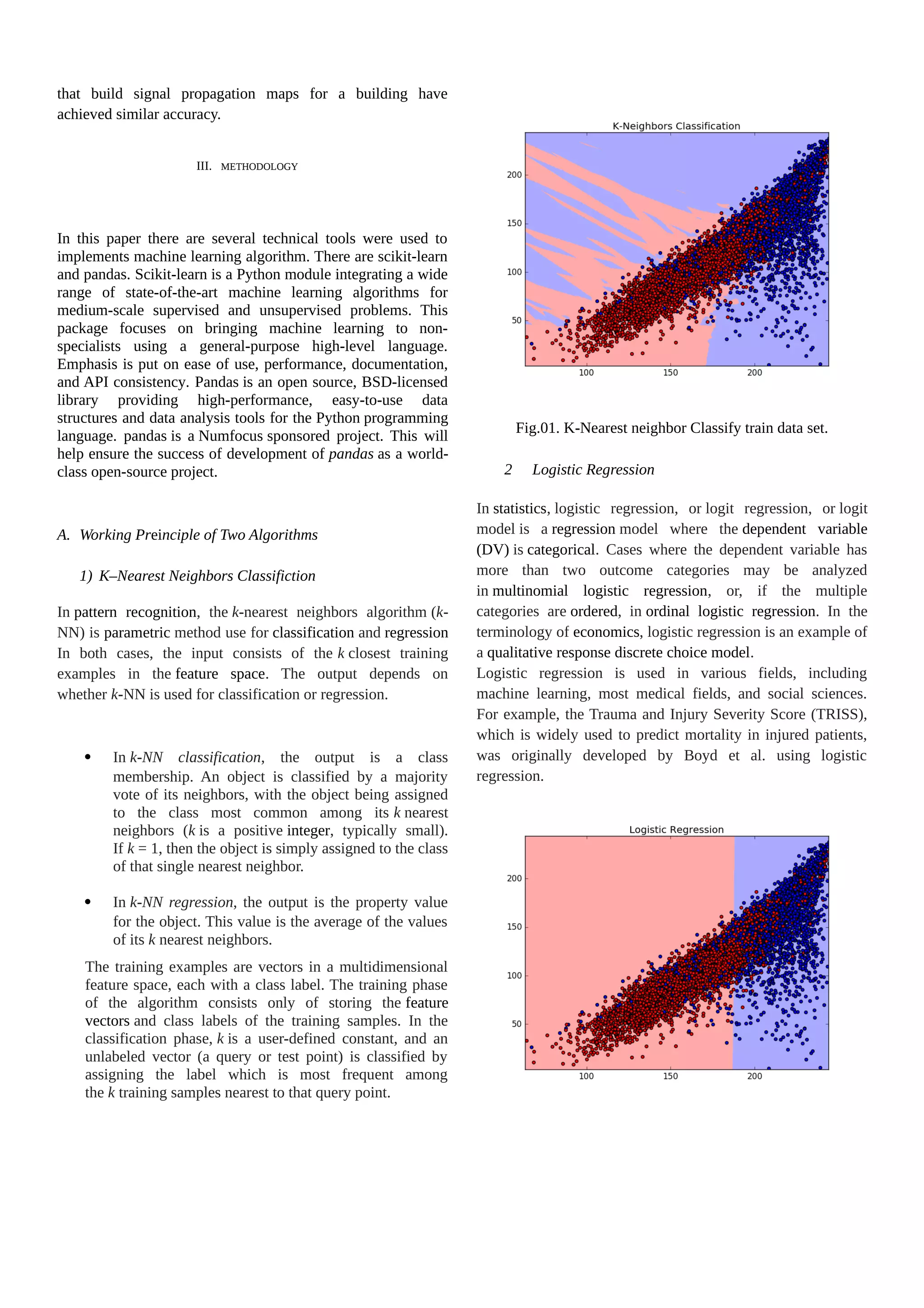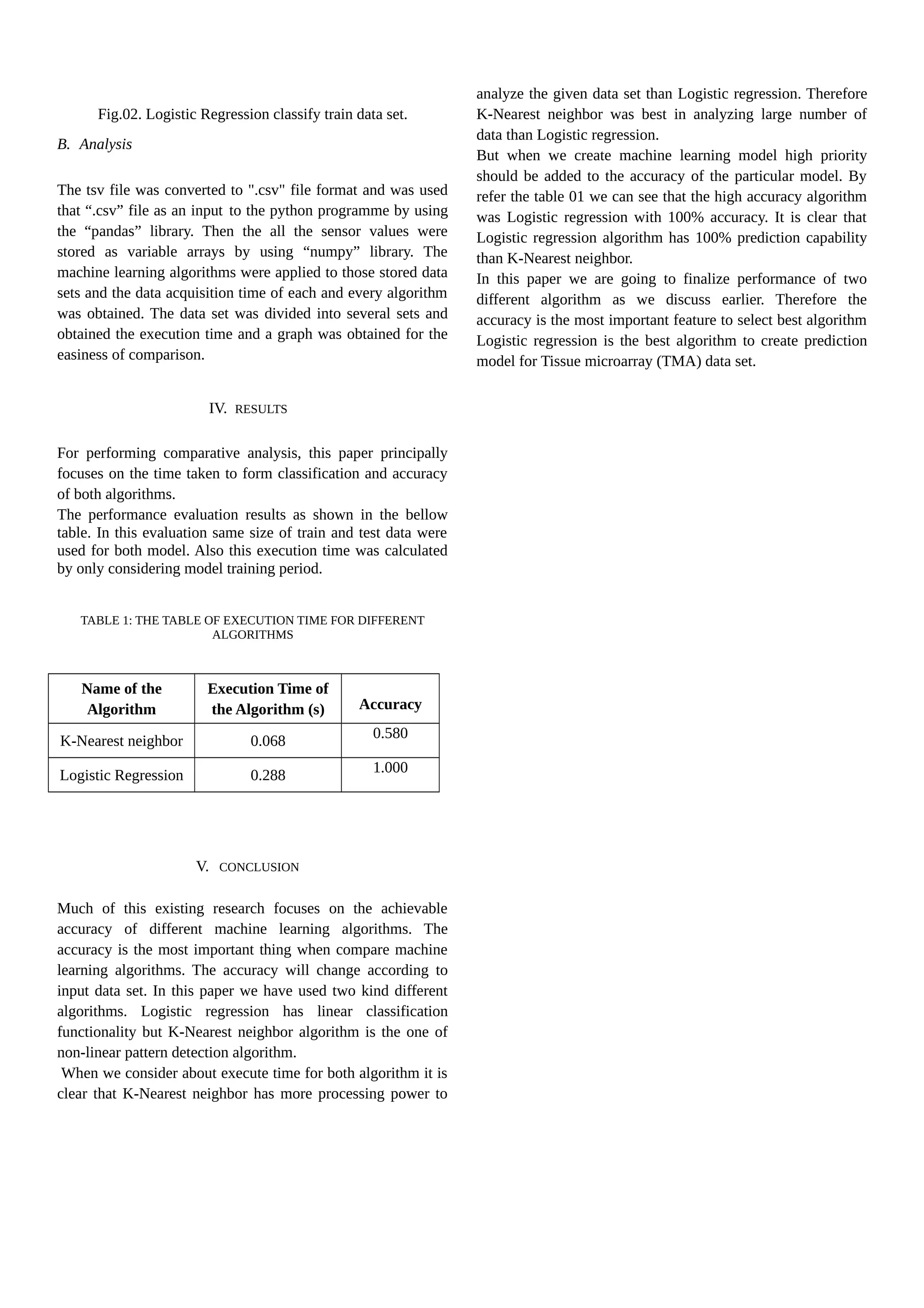This paper compares the computational performance of two machine learning algorithms, k-nearest neighbor and logistic regression, using a dataset of 7981 data points with a focus on processing time and accuracy. While k-nearest neighbor demonstrated faster processing, logistic regression achieved a higher accuracy of 100%. The study concludes that logistic regression is the preferred choice for creating predictive models in tissue microarray data analysis due to its superior accuracy.


